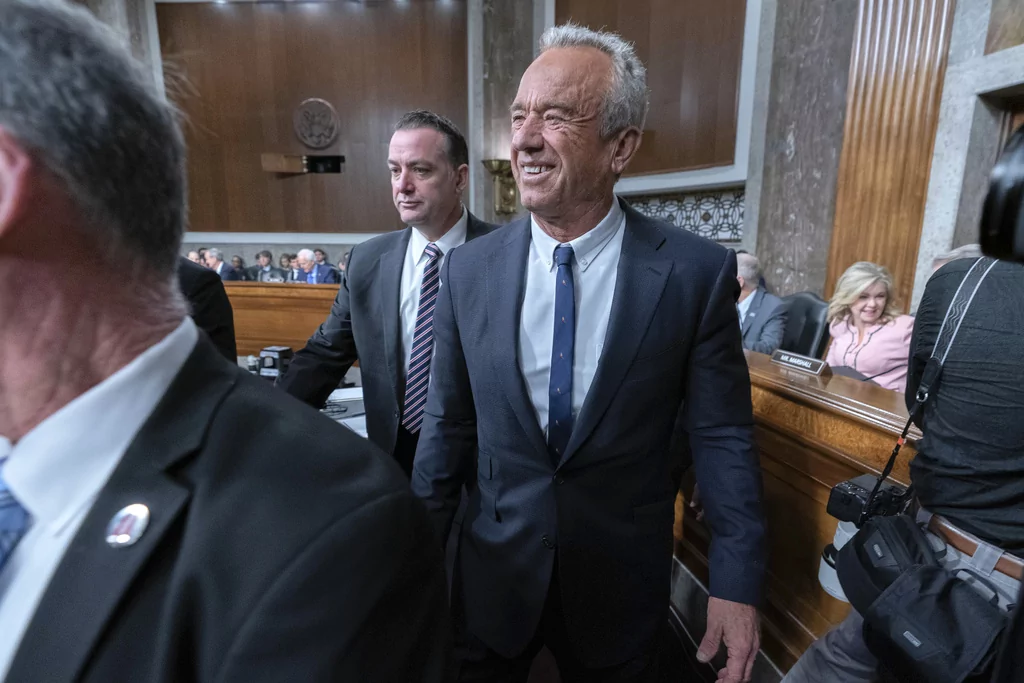Wake up with the Washington Examiner: Oct. 7 one year later, and the Supreme Court prepares to fight ghosts – Washington Examiner
The article from the Washington Examiner reflects on the significant events and implications following the October 7, 2023, attack by Hamas on Israeli civilians, which was described as the deadliest day for Jews since the Holocaust. It notes the death toll of 1,200 and the capture of 200 hostages, marking an escalation in the longstanding conflict and reshaping political dynamics, including protests on college campuses and impacts on the U.S. presidential election.
In response to the attack, Israel has effectively countered Hamas and its allies through military operations targeting Hezbollah and strikes in neighboring countries, including Iran, Syria, Iraq, and Yemen. The conflict has strained the U.S.-Israel relationship, with the Biden administration navigating internal party tensions and diplomatic challenges, particularly concerning arms support for Israel.
The article emphasizes the rising threats from Iran, particularly its support for proxy groups like Hamas and Hezbollah, which complicates regional stability and poses challenges for U.S. interests. Analysts point out the importance of Iran’s role in the ongoing conflict, raising alarms about potential direct confrontations and the risk of nuclear escalation.
Additionally, the article previews the upcoming Supreme Court term, citing imminent arguments regarding regulations on “ghost guns,” which are untraceable firearm kits sold online. The court’s decisions could significantly impact Second Amendment interpretations and regulatory authority over firearms.
the piece highlights the intricate interplay between military, diplomatic, and judicial factors shaping contemporary Middle Eastern geopolitics and U.S. domestic policy.
Wake up with the Washington Examiner: Oct. 7 one year later, and the Supreme Court prepares to fight ghosts
One year later
The Oct. 7, 2023, attack by Hamas terrorists on unsuspecting Israeli civilians that left 1,200 dead and 200 captured as hostages was the deadliest day for Jews since the Holocaust. The surprise attack was an escalation in a long-simmering conflict that vaulted the Middle East back into the consciousness of the West, spurring Hamas-sympathetic college students to stage protests on campuses and changing the nature of the presidential election.
Israel has led a successful campaign against Hamas and its allies — striking right in the heart of Iran, the primary backer of Hamas and the Jewish state’s other primary foe, Hezbollah, in Lebanon to the country’s north. Ingenious attacks, successful ground invasions, and daring rescue operations to bring hostages captured on Oct. 7 home have not been without criticism from the world community, however.
This week, the Washington Examiner is taking a hard look at what the last 12 months have meant for Israel, the United States’s strongest and most important ally in an unstable part of the world, and what the conflict has meant and will mean for the U.S. itself.
Defense Reporter Mike Brest opened our series this morning by stitching together and making sense of the various strands erupting from the brutal attack.
“Since the Oct. 7 attack, Israeli forces have carried out ground operations in Gaza and Lebanon, and have intercepted missiles and rockets fired from both, in addition to projectiles fired from Iran, Syria, Iraq, and Yemen, and Israel, in retaliation, has carried out strikes in all of those countries,” Mike wrote.
“Back home in the U.S., it upended the relationship between America and one of its strongest allies. The Biden administration has struggled to walk a delicate tightrope of supporting Israel while placating an anti-Israeli wing of the Democratic Party that believes genocide is being committed in Gaza. Such is the divide, particularly in swing state Michigan, that it may cost the Democrats the White House come November. The administration’s delaying of arms to Israel has become a particular diplomatic sore spot between President Joe Biden and Israeli Prime Minister Benjamin Netanyahu,” he wrote.
Opening up conflict with Iran was not an immediate side effect of Israel’s response to Hamas, but it could prove to be the most dangerous — and most important. The unsteady state of Gaza would make it a far less capable foe without the monetary and institutional backing of Iran. While the country has made it clear it wants to wipe Israel off the map, it wasn’t until the post-Oct. 7 conflict that the battle between the countries has played out in such stark ways.
Iran launched rockets directly at Israel from its soil for the first time ever in April and followed that historic attack with another round earlier this month.
The bulk of the fighting is taking place between Iran’s proxies in Hamas and Hezbollah. However, Iran being drawn into overt attacks is worrying defense experts who see world stability being threatened if a country on the brink of possessing a nuclear weapon is emboldened to challenge its enemies head-on.
“I think the big threat for Israel and for U.S. priorities in the region is the role that Iran has played in fomenting and then supporting this conflict,” Brian Carter of the Critical Threats Project at the American Enterprise Institute told Mike. “When I say this conflict, I’m not just talking about Gaza or southern Lebanon, but in fact, the regional war that has been ongoing since Oct. 7. So one of the things that this war has really drawn out is the degree of connectivity and coordination between Iran’s different proxy and partner groups across the Middle East.”
Click here to read all about the last year of conflict and what it means for the U.S. and the world.
Ghosts in the administrative state machine
The Supreme Court is preparing to begin another blockbuster term, and it is starting with arguments about the Second Amendment. While Chief Justice John Roberts and the court weather storms of criticism and plunging approval numbers, they aren’t shying away from thorny questions that relate directly to fundamental rights.
Supreme Court Reporter Kaelan Deese wrote for us this morning that on Tuesday, the court will hear arguments about the regulation of “ghost guns” — kits sold online for assembling firearms at home that can be untraceable. The Bureau of Alcohol, Tobacco, Firearms, and Explosives issued a rule in 2022 that would treat the kits like firearms. But Jennifer VanDerStok and other private gun builders argue the agency overstepped its authority with the rule and are fighting to rein in the ATF.
“The ATF defends the rule as necessary to combat the threat of ghost guns, which are being used in a growing number of crimes across the nation,” Kaelan wrote. “Ghost guns, according to the ATF, pose an urgent public safety threat because they involve components that can be ‘readily converted into a working firearm’ and can be done so anonymously, bypassing traditional gun control measures such as background checks.”
How “readily” the kits can be converted into firearms might be the key to whether the ATF rule stands or if the court will continue its record of rolling back regulations issued by administrative agencies rather than Congress.
Last year, the court struck down a Trump-era ATF rule banning bump stocks. That ruling, Kaelan wrote, will likely have a greater bearing on the justices than the 6-3 New York State Rifle & Pistol Association v. Bruen decision that found gun control measures must conform to the nation’s “history and tradition” of firearms laws.
Click here to read more about the Second Amendment and administrative state challenges the court will determine this term.
New from us
A year after Oct. 7 attack, Israel is doing the West’s work
Fearful of losing Muslim vote, Democrats tip-toe around Hamas terrorists
What to know about Daniel Penny’s case ahead of the trial
How battleground states are targeting AI and ‘deepfakes’ in political campaigns
Nontraditional IDs you can use to vote this November
In case you missed it
Salena Zito sat down with Trump before his return to Butler, Pennsylvania, on Saturday
Chicago schools have a problem
Tim Walz tried to explain a growing list of misstatements as speaking ‘passionately’
For your radar
Biden and first lady Jill Biden will mark the anniversary of the Oct. 7 attacks with a yahrzeit candle lighting in the blue room at the White House at 11:45 a.m. They will be joined by a rabbi.
Vice President Kamala Harris and second gentleman Doug Emhoff will mark the anniversary of the Oct. 7 attacks by planting a memorial tree and delivering remarks from the Vice President’s Residence at 4 p.m.
White House press secretary Karine Jean-Pierre will brief reporters at 1:30 p.m.
" Conservative News Daily does not always share or support the views and opinions expressed here; they are just those of the writer."





Now loading...